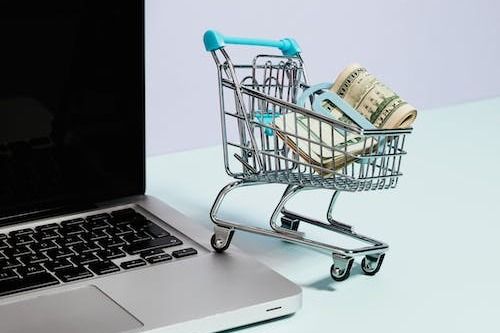
B2C stands for business to consumer, in French “from the company to the customer”. We’ll see that it fits into a specific sales cycle.
The concept of B2C
Definition:
B2C is a retail sales approach where goods and services are delivered by businesses to end customers, who buy for personal use. It’s the opposite of the B2B model.
More concretely, B2C represents commercial transactions between a business and the end user. Don’t confuse it with D2C (direct to consumers). Both B2C and D2C refer to providers offering services to customers. However, D2C brands operate without “intermediaries” that B2C businesses like Amazon rely on. All D2C transactions and interactions happen directly between the customer and the brand.
The B2C concept can also be applied to marketing. In this case, it refers to the tactics and strategies businesses use to advertise their products and/or services to individuals.
Examples:
The term B2C applies to any commercial transaction where consumers receive goods or services from businesses, such as retail stores, restaurants, and medical offices. Most often, it refers to e-commerce companies, which use online platforms to connect their products to consumers. A B2C retail experience could be shopping at a local grocery store, visiting a doctor or hair salon, dining at a restaurant, or buying headphones from an online shop.
For example, Amazon is the world’s largest e-commerce site. Amazon’s various products (Amazon Prime and Amazon Originals (media funded by Amazon), Prime Video) are good examples of the company’s B2C nature. Apple is also a great example of a B2C company as it designs, develops, manufactures, and sells consumer electronics to customers.

The complexity of B2C
B2C faces major challenges since individual consumer behavior is highly changeable. Amid this constant change, one thing is clear: the goal is to keep customers coming back to your brand, so you must offer the flexible, tailored experiences they want. It’s essential to engage customers in a non-intrusive way and be present wherever they spend time online, with personalized content based on their interests and shopping habits.
Several Business models have emerged with the rise of online B2C commerce:
-
Direct sellers: This is the most common model. In online stores, consumers buy goods from businesses. This could be a major brand, a department store, or a small company that makes and sells products directly through an online shop.
-
Intermediaries: Instead of offering their products and services to buyers on their own websites, these e-commerce companies provide a platform for C2C (consumer to consumer) that connects buyers and independent sellers. Brokers usually make a profit by taking a small percentage of each seller’s transaction.
-
Advertising-based model: A company with a website offers a product/service and buys paid ads on search engines, like with Google Ads or Microsoft Advertising.
-
Community-based model: Like advertising-based companies, “community-based” businesses use online communities with shared identities and interests to connect users to targeted ads. Social networks like Facebook and Instagram are good examples.
-
Subscription-based model: These “fee-based” companies require a paid subscription for access to their content. For example, streaming platforms like Netflix.
-
Physical location: A business or retail establishment where consumers can enter the store, touch and hold merchandise, and buy products or services in person. This model covers all B2C businesses that aren’t online.
Become a customer relationship expert
The advantages of B2C
-
Global reach: Large-scale B2C businesses often have a very broad target audience.
-
Low cost: Lower operational or physical costs such as infrastructure or store staff.
-
Faster: B2C is often easier to launch to market in terms of simplicity. Setting up an online store, displaying products, advertising, and even order management require less planning.
-
Customer personalization: By targeting market segments directly, customers aren’t impacted by what they don’t want. It’s easier to find customers.
-
Improved customer experience: Customers can easily find the products they want, payment and sales are flexible, and a return policy for unsatisfactory products builds customer trust.
Ready to boost your productivity with Leexi?
Leexi AI Notetaker takes notes for you